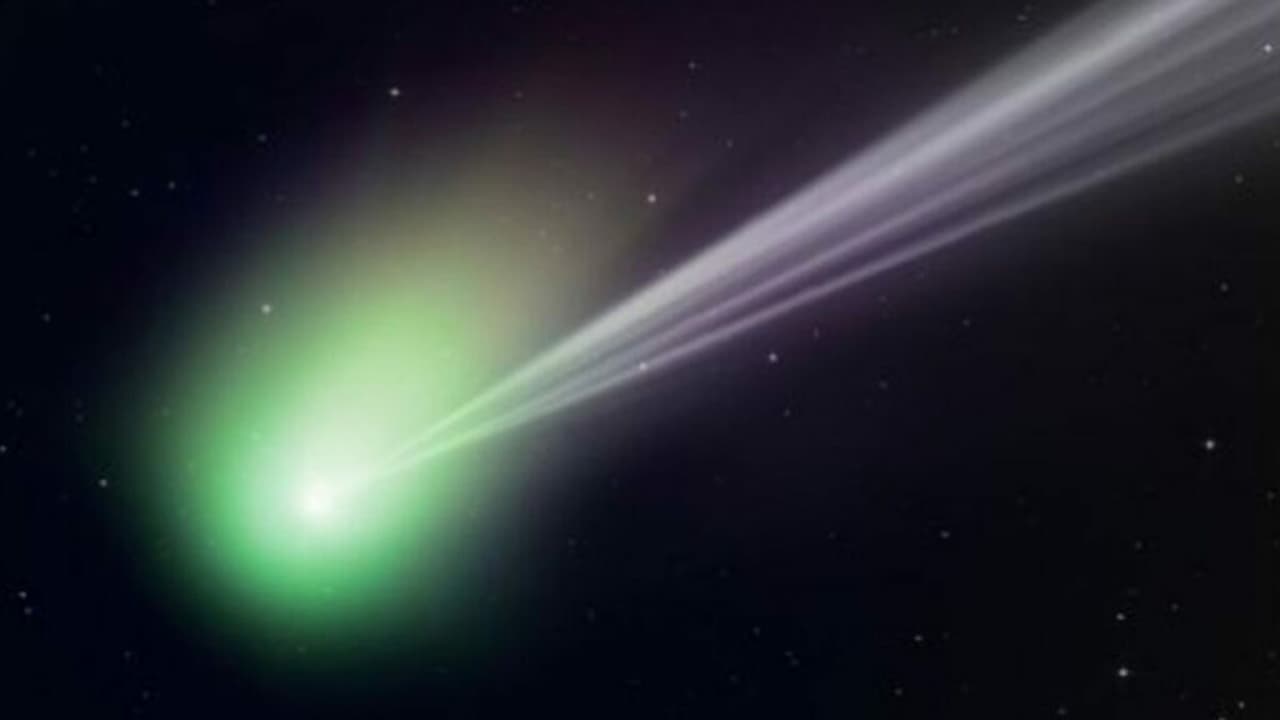News
Green comet visible to the naked eye! Here’s where and when to catch a glimpse.

- February 1, 2023
- Updated: July 2, 2025 at 3:05 AM

A comet discovered last year can be seen streaking across the night sky over the next few days. The star, named C/2022 E3 (ZTF), was already detected on March 12 by the Zwicky Transient Facility (ZTF) astronomical robot, but it has returned and will be more visible than ever. But everyone knows it as “The Green Comet”
After a journey of hundreds of millions of kilometers, comet C/2022 E3 (ZTF) is getting closer and closer to its encounter with Earth. If you are also a fan of the stars, make a note of these dates: February 1 and 2. During this period, the comet is expected to “graze” our planet and pass more than 40 million kilometers from the atmosphere. To put this data in context, this would be a distance 100 times greater than the distance between the Earth and the Moon.
Astrophotographer Andrew McCarthy has managed to take a snapshot of the comet in all its splendor, revealing its characteristic green color. Although NASA already detected the comet in 2022, it is now when we will be able to appreciate it with the naked eye. McCarthy has commented on his networks some of the ups and downs he had to go through to take this image, such as traveling to the Arizona desert. According to him, taking the picture was very complicated because of the “humidity and fog” of the moment.

Moreover, the comet will not cross the Earth again. Astronomer Jessica Lee (Royal Observatory of Greenwich) has explained that “the orbit of this comet is so eccentric that it is no longer in orbit”, so “it will not return”. All in all, this is a unique and special occasion that you should not miss, whether you are a stargazer or not.
How can I see the comet?
Next February 1 will be the day the comet is at its closest point to Earth. This will happen around 7:11 pm, Spanish time.
As for the brightness of the comet, there is no need to worry. NASA has reported that the star can be observed with the naked eye without the use of other devices. When we have chosen a spot to see the comet, it is advisable to wait for half an hour for our eyes to adapt to the light.
To get the best possible glimpse of the comet, you will first need to have a pair of binoculars or, instead, a small telescope. You should keep in mind that the best time to see it will be at dusk. The comet will leave behind an unmistakable green halo, which will help you to easily identify it.
If you have a difficult time seeing the comet on your own, don’t worry. The Virtual Telescope Project will carry out a live broadcast of the comet “green” next January 26 at 20:15 Spanish time. Follow them through their YouTube channel or the official website so you don’t miss a thing.
Finally, try to stay away from places that have a lot of light pollution. The light of the cities will worsen the sighting of the star and it will not be as appreciable.
Artist by vocation and technology lover. I have liked to tinker with all kinds of gadgets for as long as I can remember.
Latest from María López
- Using Acrobat And Illustrator To Create Interactive PDFs for Marketing
- Color Theory and AI: How To Create Perfect Palettes Every Time
- Adobe Premiere Pro: Using Generative Extend to create custom ambient audio and room tone
- One-Touch Landscapes: Enhancing Skies, Subjects, and Backgrounds with Scene Enhance on Mobile
You may also like
 News
NewsThis series starring Kristen Bell and Adam Brody returns to Netflix with its second season
Read more
 News
News8,424 cryptocurrency wallets are stolen due to a cybersecurity issue
Read more
 News
NewsIf you're missing wacky humor in Borderlands 4, this modder is the reason it hasn't been there and for it to come back
Read more
 News
NewsIt’s the new French series that everyone is talking about and it will premiere very soon on Apple TV+
Read more
 News
NewsThe Yakuza saga confirms a remake of its most polarizing installment among fans
Read more
 News
NewsOne of the great classics of the 2000s video game will receive a remaster worthy of its legend
Read more